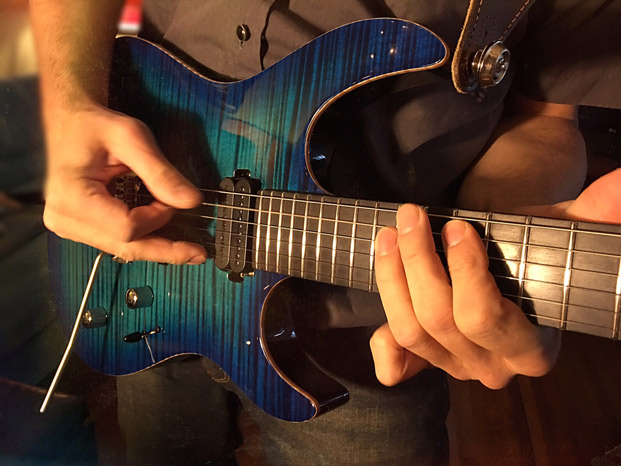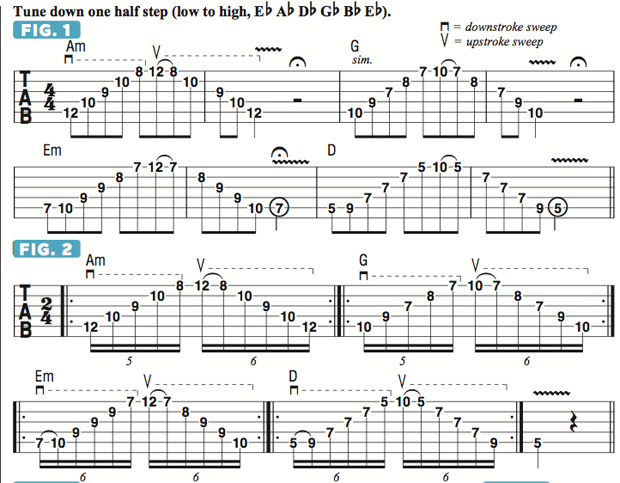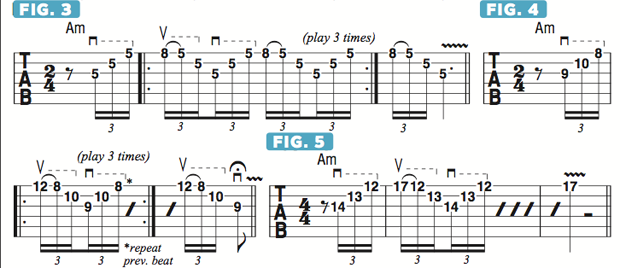Applying Sweep Picking to Chord Progressions
Learn how to apply sweep picking techniques to playing arpeggios over moving chord progressions.

As useful as sweep picking can be for playing an ascending or descending arpeggio over a single chord, developing the ability to seamlessly transition from one arpeggio shape to another within a lead phrase will greatly aid in one’s complete understanding and ultimate mastery of the technique.
With this in mind, this month I’d like to demonstrate how to apply the sweep picking techniques I presented in the previous two columns to playing arpeggios over moving chord progressions.
As a brief review, sweep picking, or sweeping, entails dragging the pick across a group of adjacent strings in a single direction and stroke, i.e., downward or upward, with only one note picked per string.
A downstroke sweep is used to play an ascending arpeggio, moving from lower strings to higher strings, and an upstroke sweep is employed to perform a descending arpeggio, moving from higher strings to lower strings.
Let’s envision a four-chord progression in the key of A minor that moves from Am down one whole step to G, then down one and a half steps to Em and finally down another whole step to D. As shown in FIGURE 1, I use downstroke and upstroke sweeps across the top five strings to perform an ascending and descending arpeggio over each chord, picking mostly one note per string, the exceptions being on the high E string, where I change the direction of the sweep (followed by a pull-off), and when I briefly alternate pick two notes on the A string on the Em and D arpeggios (an upstroke followed by a downstroke in each case).
FIGURE 2 illustrates a pattern wherein each of the ascending and descending arpeggios from FIGURE 1 is repeated before moving on to the next arpeggio in the progression. Notice that, when repeating the Am and G arpeggios in bars 1 and 2, I “double pick” the lowest note with a quick up-down sequence. When playing the Em and D arpeggios, however, the notes that were hammered onto the A string are included in the upstroke sweep during the descent.
Another useful twist on this approach is to focus only on the top three strings, as demonstrated in FIGURES 3–5.
FIGURE 3 begins with what’s called a first-inversion Am triad, for which the third of the chord, C, is the lowest note, played on the G string. In FIGURE 4, I move up the fretboard to a second-inversion A minor triad shape, for which the fifth of the chord, E, is the lowest note, again played on the G string.
In FIGURE 5, I likewise move up the neck again to the next chord tone of Am sounded on the G string, which is the A root note, resulting in what’s called a root-position A minor triad. Be sure to memorize all of these shapes and patterns, then try transposing them to other string groups and keys and areas of the fretboard.


Get The Pick Newsletter
All the latest guitar news, interviews, lessons, reviews, deals and more, direct to your inbox!










